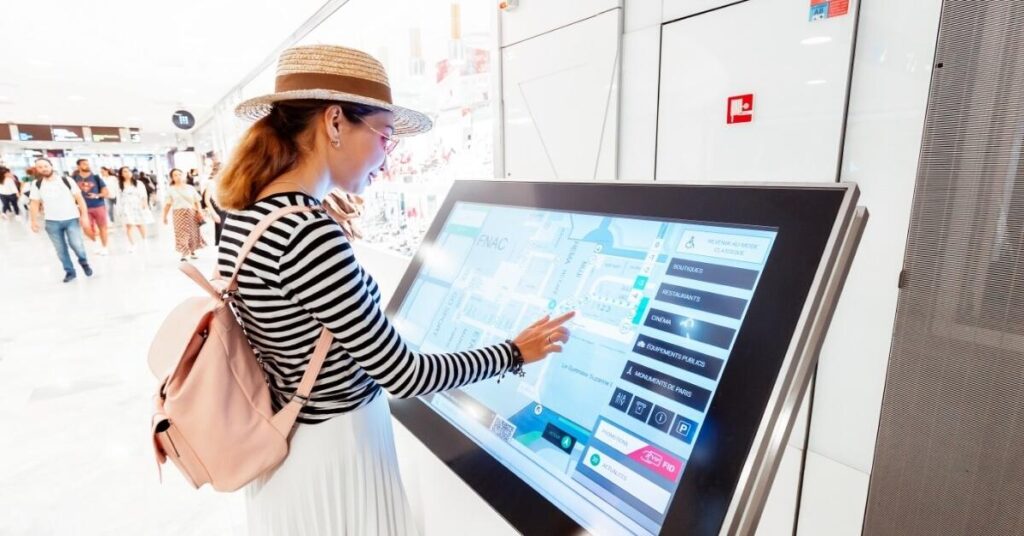In the fast-paced world of retail, businesses are constantly seeking innovative ways to capture the attention of potential customers. Traditional static signage, while still essential, is making way for a new era of interactive and dynamic store signs. These signs not only capture attention but also engage customers in unique and memorable ways, creating immersive experiences that leave a lasting impact. Let’s delve into the evolution of interactive and dynamic store signs and how they are revolutionizing customer engagement.
Interactive Touchscreens
Interactive touchscreens have quickly become an essential part of retail spaces. These user-friendly screens enable customers to browse items, get more details, and even place orders independently. Offering the freedom to explore at their own pace, businesses can improve the shopping experience by making it more tailored and convenient. Ranging from fashion outlets to electronics stores, interactive touchscreens have carved out a niche across various sectors.
QR Code Integration
QR codes have experienced a resurgence, especially in the wake of the COVID-19 pandemic. Customers can simply scan a QR code displayed on a store sign with their smartphones to access promotions, product details, or even instructional videos. This seamless integration of offline and online experiences bridges the gap between physical and digital retail spaces, providing customers with instant access to relevant information.
Augmented Reality (AR) Displays
Augmented Reality is transforming the way customers interact with products. AR displays enable customers to visualize products in their real environment before making a purchase. For example, in furniture stores, customers can see how a particular sofa would fit in their living room. This immersive experience not only boosts customer confidence in their purchases but also creates a sense of excitement and novelty, enhancing overall customer satisfaction.
Interactive Floor Displays
Interactive floor displays utilize motion-sensing technology to engage customers as they walk through a store. These displays can showcase products, display promotional content, or even gamify the shopping experience. By encouraging customers to interact physically with the store environment, businesses can create a sense of playfulness and exploration, turning a routine shopping trip into an adventure.
Personalized Digital Signage
Advancements in data analytics have enabled businesses to create personalized digital signage that tailors content based on customer demographics, behavior, or preferences. For instance, a digital sign in a clothing store can display different clothing styles based on the age group of the approaching customer. This personalization not only captures attention but also makes customers feel understood and valued, fostering a sense of loyalty.
Voice-Activated Displays
Voice technology has gained significant traction, and its integration into custom signs is no exception. Voice-activated displays allow customers to interact with the signage using voice commands. Whether it’s seeking product information, checking stock availability, or even placing orders, these displays provide a hands-free, intuitive experience. This technology is particularly beneficial for customers with mobility impairments, enhancing inclusivity in retail spaces.
Gamified Experiences
Gamification has become a popular strategy to engage customers. Interactive store signs can incorporate gamified elements, such as quizzes, puzzles, or challenges, offering discounts or rewards for participation. By tapping into the competitive spirit of customers, businesses not only entertain but also incentivize interactions, driving customer engagement and brand loyalty.
Conclusion
New and improved custom signs have redefined the way businesses connect with their customers. By embracing technologies like touchscreens, QR codes, augmented reality, motion-sensing displays, personalized content, voice activation, and gamified experiences, retailers are creating immersive environments that captivate, inform, and entertain. In this age of experiential retail, businesses that leverage these innovative signage solutions are not only staying ahead of the curve but also crafting memorable and meaningful interactions that resonate with customers long after they leave the store. As technology continues to evolve, the possibilities for interactive and dynamic store signs are limitless, promising an exciting future for customer engagement in the retail landscape.






